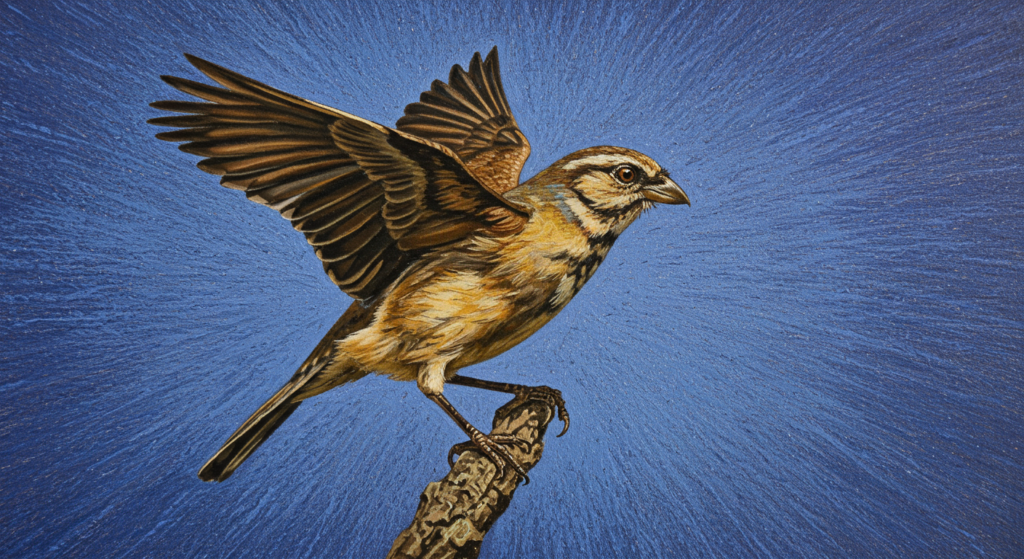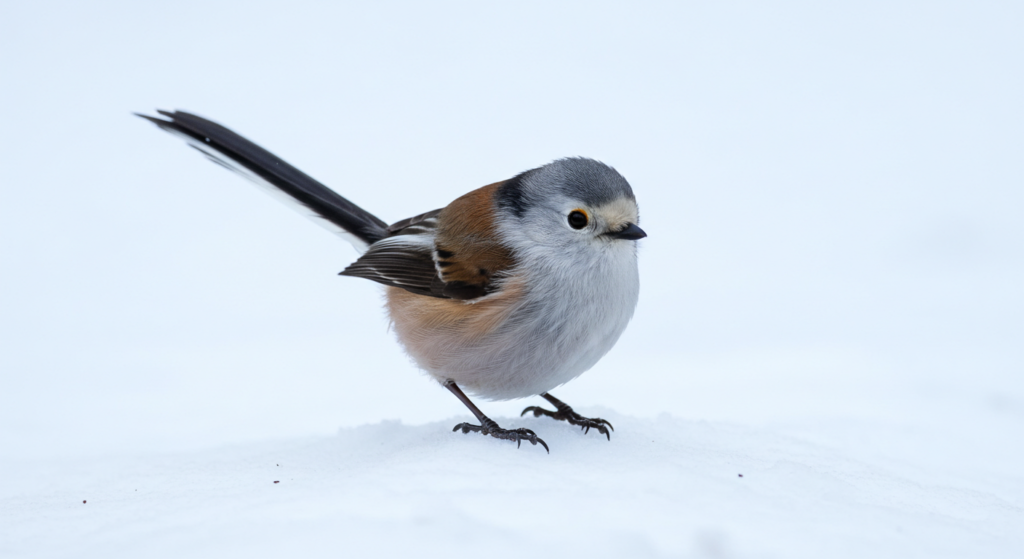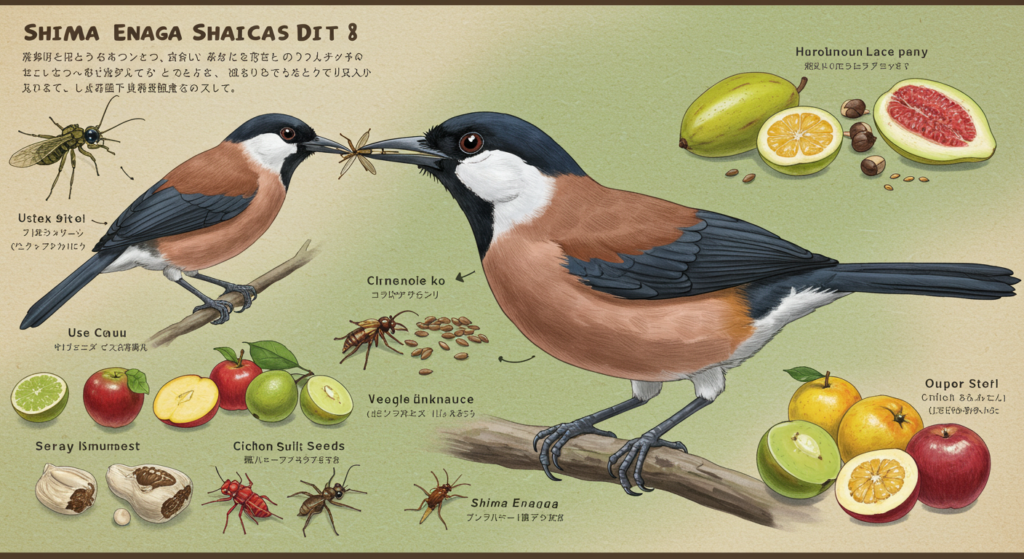Did you ever lay eyes on a bird that resembles a white snowball with wings? The Shima Enaga bird, a delightful subspecies of the long-tailed tit, steals hearts with its soft white plumage and cute face. A native bird from Hokkaido, Japan, the bird is a winter season favorite among bird enthusiasts and nature lovers.
In Japan, this bird is a cultural icon, often called the “snow fairy” or “yuki no yousei.” Its image appears on postcards, plush toys, and social media, drawing tourists to Hokkaido.
So here is this all-encompassing article discussing the Shima Enaga’s features, habitat, behavior, spiritual meaning, readiness for sale, and its place as a symbol of culture within Japan’s northern island. Rich in information, this guide should be a hit on Google without boring you to tears with dense, dry material.
Key Takeaways:
- The Shima Enaga is a subspecies of the long-tailed tit, known for its white, fluffy feathers.
- It thrives in Hokkaido’s cold, snowy forests.
- Its diet includes insects, seeds, berries, and tree sap, with unique foraging habits.
- Conservation is vital due to habitat loss and climate change.
- The bird’s cute appearance makes it a social media star and cultural symbol.
- It represents purity and harmony in Japanese spirituality.
- Shima Enaga merchandise is popular, but live birds are not typically sold.
Discover the Shima Enaga – Japan’s Cutest Snow Fairy:
- Scientific Name: Aegithalos caudatus japonicus
- Life Span: 2-3 years (up to 5 years in optimal conditions)
- Size: 12-16 cm (including 7-9 cm tail)
- Weight: 5-8 grams
- Wingspan: 12-14 cm
- Status: Stable, not endangered
- Diet: Insects, spiders, seeds, berries, tree sap
- Behavior: Highly social, playful, cooperative
- Habitat: Deciduous and mixed forests in Hokkaido
Interested in Shima Enaga’s background? This small bird, known scientifically as Aegithalos caudatus japonicus, is a member of the long-tailed tit family. For example, while its mainland relatives have a more mottled face, the Shima Enaga has a clean white face, which has led to its nickname as a “cotton ball” bird. At 12-16 cm, plus its 7-9 cm tail, it’s a small bird with a large personality.

Furthermore, the Shima Enaga is endearing because of its unique appearance. Its white winter coat perfectly camouflages itself with snowy environments, and its dark, bead-like eyes and small beak contribute to its cuteness. During summer, its neck feathers are slightly brownish, but the winter form is the showstopper. Therefore, birdwatchers flock to Hokkaido to spot this bird jewel.
“The Shima Enaga is like a little angel of the snow, bringing joy to all who see it.” – Japanese proverb
Top 3 Spots to Spot Shima Enaga in Hokkaido:
Curious about where to find this cute bird? The Shima Enaga inhabits Hokkaido, Japan’s northernmost island. In particular, it flourishes in mixed and deciduous forests, with dense shrub and tree growth that hides and feeds it from severe winters. Its habitat is mainly Hokkaido, so it is a distinct inhabitant of this wintering area.
Nopporo Forest Park:
For instance, Nopporo Forest Park is an ideal place to see the Shima Enaga. Situated close to Sapporo, the park has dense deciduous woodlands that provide perfect nesting and foraging areas. Go there in December when the birds are in action, flying through low bushes. Their high-pitched calls usually lead birdwatchers to their position.
Utonai Lake:
Likewise, Utonai Lake, a reserve close to Tomakomai, is a hotspot for viewing Shima Enaga. Wetlands and forest around the lake draw flocks, particularly during January. Catch their soft call and look into the tree tops for their fluffy white bodies. The lake trails are quiet enough for undisturbed viewing.
Yoroushi Hot Springs:
Similarly, Yoroushi Hot Springs, located in eastern Hokkaido, provides a tranquil environment to observe Shima. The month of February is the optimum time to visit as the birds congregate in adjacent coniferous woods. With the use of binoculars, you are able to observe them zipping between snowy branches, their merry antics the highlight of any trip.
MORE FOR YOU: 7 Types of Falcons in Texas – Best Spots and Tips!
5 Adorable Traits of the Shima Enaga You’ll Love:
Interested in Shima Enaga’s looks? This bird is a master of camouflage, fitting into its white environment. Its body is 5-7 cm long, with a tail that almost doubles its size. Interestingly, the white facial feathers are its distinctive feature, set against its dark, bead-like eyes. Males and females are alike, so it is difficult to distinguish between them.

In addition, the Shima Enaga’s feathers change seasonally. During winter, it develops additional fluffy feathers to keep itself warm, achieving its signature snowball appearance. By summer, its feathers become streamlined, with darker colors on the neck. At only 5-8 grams, its light weight makes it dart between twigs effortlessly.
“He who is content with little, like the Shima Enaga, finds joy in simplicity.” – Adapted from Proverbs 15:16
Shima Enaga’s Playful Social Life – What Makes It Special:
This bird is very social and is found in small groups of 5-10 birds. It has soft, high-pitched chirps that create a lively forest chatter. Because of this, the flocks collaborate to gather food, particularly in winter when there is not much to eat.
Moreover, the mischievous behavior of Shima Enaga is entertaining to watch. It speeds from branch to branch, hanging upside down to feed on insects or seeds. Its cooperative behavior also manifests in the nest, where members of the family assist in raising the young. Bird enthusiasts particularly observe its nonchalance, how it does not flinch in approaching humans.
Shima Enaga’s Diet Plan – A Peek at Its Diet:
Hungry for details on what the Shima Enaga eats? Its diet is diverse, including insects, spiders, seeds, berries, and tree sap. For instance, in spring and summer, it hunts small insects like caterpillars, providing protein for growing chicks. During winter, it switches to seeds, berries, and sap, which are easier to find in snow-covered forests.

Moreover, foraging is a group effort for the Shima Enaga. Flocks move together, searching tree bark and twigs for hidden insects. Their small beaks are perfect for picking tiny morsels. This adaptability ensures survival year-round. Researchers highlight its role in controlling insect populations, making it vital to Hokkaido’s ecosystem.
| Food Source | Season | Role in Diet |
| Insects | Spring/Summer | The primary protein source for nests |
| Seeds | Winter | Energy-rich food for cold months |
| Berries | Fall/Winter | Provides vitamins and hydration |
| Tree Sap | Winter | Supplemental energy source |
Nesting & Breeding Habit:
Breeding season starts early in spring, between the months of March and May. Pairs construct nests from natural matter such as moss, lichen, and spider silk to make a soft, well-insulated dwelling. Each nest consists of 6-10 eggs, incubated by the female for around 12-14 days.
In addition, chicks are small and helpless at birth, dependent on both parents for food and warmth. Siblings from earlier broods will often help, a cooperative breeding behavior. This cooperation increases chick survival. Fledglings arrive in the flock by late summer, learning to forage and move through their forest habitat.
“The Shima Enaga’s nest is a testament to nature’s artistry, woven with care and precision.” – Dr. Hiroshi Takahashi, Ornithologist
MORE FOR YOU: Discover The World Of Hummingbirds In Michigan In 2025!
Conservation Challenges:
While not currently endangered, this bird faces challenges from habitat loss and climate change. For example, deforestation in Hokkaido reduces nesting sites, forcing flocks into smaller areas. Warmer winters disrupt food availability, as insects and berries become scarce.
However, conservation efforts are underway to protect the Shima Enaga. Local groups plant native trees to restore habitats, while researchers monitor populations. Public awareness campaigns, fueled by the bird’s cute appearance, encourage eco-friendly practices. Protecting Hokkaido’s forests is crucial to ensuring this bird’s survival.
Unlocking the Spiritual Meaning of the Shima Enaga Bird:
In Japanese tradition, this bird carries profound spiritual meanings. Its pristine white feathers symbolize purity and innocence, often linked to new beginnings. The Shima Enaga’s gentle nature reflects harmony, aligning with Japan’s emphasis on community.

Additionally, many believe the Shima Enaga brings messages of hope and tranquility. Spotting one in the wild is considered a sign of good fortune, especially during tough times. Its resilience in snowy landscapes inspires perseverance, deepening its cultural and spiritual importance.
“The Shima Enaga dances through the snow, a symbol of hope in the coldest times.” – Yoko Ono, Artist
Can You Buy a Shima Enaga? Prices and Options in the USA!
Live Shima Enaga are not generally sold since they are in the wild and under protection laws. Shima Enaga-themed products, like plush toys, stickers, and collectibles, are easily found in the USA, exciting fans.
For example, merchandise prices differ. On sites such as Etsy and Redbubble, stickers and small sculptures are between $3 and $15, while plushies are $20 to $50, based on skill. Specialty pieces, such as handcrafted glass beads or watercolor paintings, can be anything from $10 to $100. Always buy from established vendors for quality.
| Merchandise Type | Price Range (USD) | Where to Buy |
| Stickers | $3–$15 | Etsy, Redbubble |
| Plush Toys | $20–$50 | eBay, Etsy |
| Figurines | $10–$30 | Tinywich, eBay |
| Art Prints | $15–$100 | Redbubble |
Your Guide to Spotting Shima Enaga in the Wild:
Go to Hokkaido from November to March, when the white feathers of the bird are at their fullest. Nopporo Forest Park, Utonai Lake, and Yoroushi Hot Springs are good places to go. Take binoculars and a camera to catch their fast movements.
Nopporo Forest Park:
Particularly, this park close to Sapporo is a Shima Enaga paradise. The dense woods provide ideal nesting conditions. Go in December and inspect low shrubs for signs of activity. Chirps by the birds will usually indicate their presence, facilitating sightings.
Utonai Lake:
Likewise, wetlands and forests around Utonai Lake host Shima Enaga flocks. The time is January, and actively foraging birds will be present. They have white bodies that are easily visible against black branches, so watch carefully and listen to their cries.
Yoroushi Hot Springs:
Similarly, Yoroushi Hot Springs in eastern Hokkaido is also a serene place for spotting. February sees flocks to the forests close by. Spot them with binoculars as they perform acrobatic flights between snow-covered trees, an enchanting experience for tourists.
MORE FOR YOU: 10 Stunning Hawks in Louisiana (Photos & ID Tips)!
7 Fun Facts About Shima Enaga You Didn’t Know:
Its fluffy feathers can double its body size in winter. It can hang upside down like a bat while foraging. Here are seven fun facts about it in simple words:
- Snow-White Face: Adult Shima Enagas have a pure white face, unlike other Long-tailed Tits with black marks. This makes them look like tiny snowballs!
- Super Small: They’re tiny, about 13–15 cm long, with a long tail. They weigh less than a small battery but can handle cold winters.
- Team Players: The whole family helps raise baby birds. Older siblings or friends feed and protect the 7–10 babies in the nest.
- Nimble Eaters: These birds are like acrobats, flipping upside down to grab bugs. In winter, they eat seeds and berries when bugs are gone.
- Cozy Nests: They build round, warm nests with moss, feathers, and spider webs. These nests keep eggs and babies safe and snug.
- Japan’s Sweetheart: People in Japan love Shima Enagas! They’re on toys, art, and even have a special “Shimaenaga Day” on January 20.
- Chatty Flocks: They live in groups of 10–20 and love to talk. Their high-pitched “pit” or “eez-eez” calls help them stay together in forests.
“In the Shima Enaga, we see the delicate balance of nature, urging us to protect it.” – David Attenborough, Naturalist
Frequently Asked Questions (FAQs):
Is the Shima Enaga Bird Real?
The Shima Enaga is a real bird. It’s a subspecies of the long-tailed tit, native to Hokkaido, Japan. Known for its fluffy white feathers and long tail, it’s often called a “snow fairy” due to its adorable look.
What Is Shima Enaga in English?
In English, the Shima Enaga is called the “Hokkaido long-tailed tit” or “long-tailed tit.” The name “Shima Enaga” translates to “island long-tail,” reflecting its distinctive tail and Hokkaido origins.
Is the Japanese Snow Fairy a Real Bird?
Yes, the “Japanese snow fairy” is a nickname for the Shima Enaga, a real bird. This term captures its delicate, white plumage and graceful movements in Hokkaido’s snowy forests.
How Rare Is the Shima Enaga?
The Shima Enaga is not rare in Hokkaido, where it’s commonly found in suitable habitats. However, its subspecies is unique to this region, making sightings elsewhere uncommon. Its population faces threats from habitat loss.
Why Shima Enaga Is Taking Over Social Media?
Furthermore, photographers share stunning images of the bird on snowy branches, sparking interest in Hokkaido’s wildlife. Hashtags like #ShimaEnaga and #SnowFairy trend regularly, raising conservation awareness. This bird’s charm unites fans worldwide in admiration of its beauty.
Final Thoughts:
The Shima Enaga bird is more than its adorable face. Fluffy feathers, friendly nature, spiritual value, and toughness set it apart from Hokkaido’s wildlife. From snowy surroundings to cultural influence, this bird steals hearts globally.
By being a conservation supporter, we can guarantee the Shima Enaga becomes a thriving feature of Hokkaido for many years to come. The next time you find yourself in Hokkaido, search for this small ball of snow—it’s one view you’ll never forget.
